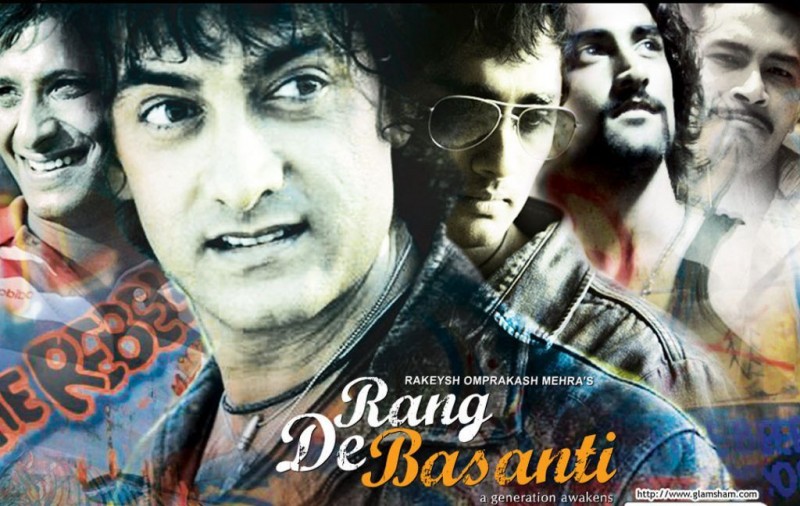
Few films in the history of Indian cinema have had as significant an impact as "Rang De Basanti" (2006). This masterful film, which was directed by Rakeysh Omprakash Mehra, skillfully combines historical accuracy, national pride, and social commentary from the present. In spite of its many layers, "Rang De Basanti" has an intriguing feature that frequently goes unnoticed: none of the actors lip-synch any of the songs. The musical story of the movie is enhanced by this out-of-the-ordinary decision, which gives it a layer of authenticity and creative innovation that continues to enthral viewers.
Songs and dance routines are essential elements of narrative in Bollywood's vast landscape. They amplify the narrative, convey feelings, and frequently turn into iconic images of the movie. However, "Rang De Basanti" deviated from the standard practise by electing to forgo having its actors lip-synch to the songs. The movie instead introduced a new level of storytelling where the songs expanded beyond their original function as merely musical interludes to serve as a commentary on the feelings of the characters and the overarching themes of the story.
The story of "Rang De Basanti" alternates between the present day and a historical account of the lives of Indian freedom fighters. The songs in the movie serve as a link between these timelines by frequently reflecting what the characters are thinking, feeling, and going through. The songs were allowed to go beyond the limitations of conventional musical sequences by the filmmakers by forgoing lip-syncing, which allowed them to become poetic expressions of the characters' inner worlds.
For example, listen to the stirring song "Luka Chuppi." This song provides the characters with an emotional anchor as they set out on a quest to learn more about their revolutionary counterparts. Instead of lip-syncing, the actors use silent gestures and expressions to capture the essence of the song's feelings. This method not only improves the cinematic experience but also makes the song's emotional impact stronger.
In order to maintain a sense of realism and emotional depth, "Rang De Basanti" chose not to lip sync. The movie captures raw and genuine moments that reflect real-life emotions by letting the actors express themselves without the restrictions of lip-synching. By connecting with the audience through the characters' subtle expressions and movements, this method makes the experiences of the characters more relatable.
For example, the fervour and restless energy of the characters are captured in the song "Khalbali." Because there is no lip-syncing, the actors are able to channel their enthusiasm and passion as they get ready for a street performance. This creates a visually dynamic scene that is brimming with excitement.
The fact that "Rang De Basanti" doesn't use lip-sync emphasises how seamlessly the past and present are woven into the story. Songs develop into a time-traveling bridge as characters interact with the stories of their historical counterparts. The song "Masti Ki Paathshala" is a prime example of how music and narrative can mesh so well. The characters in this scene interact in a lighthearted way while teaching each other valuable lessons. Because there is no lip-sync, the interactions feel more genuine, giving the audience the impression that they are seeing a personal moment in the lives of the characters.
The movie "Rang De Basanti" is proof of the impact of creativity in cinematic storytelling. Indian cinema will never be the same because of its distinctive use of music, which has compelled directors to experiment with novel ways to synchronise their stories with music. The absence of lip-synching in the movie serves as a reminder that creativity has no bounds and that even the most rigid conventions can be rethought to produce something truly remarkable.
"Rang De Basanti" stands out as a daring and brilliant break from convention in a world where lip-syncing has long been a staple of musical sequences in Bollywood films. The film blurs the distinction between reality and art by letting its actors express themselves naturally without using lip-syncing. Both the compelling storytelling and the creative use of music in this cinematic masterpiece continue to captivate audiences. "Rang De Basanti" is proof that, when it comes to the creative process, limitations can be pushed and norms can be rethought in order to produce something truly extraordinary.
From Film Set to Real Life: Anil Kapoor and Sunita Kapoor's Parallel Anniversary
Hema Malini Applauds Sunny Deol's 'Gadar 2' for Earning Over Rs 300 Crore at Box Office